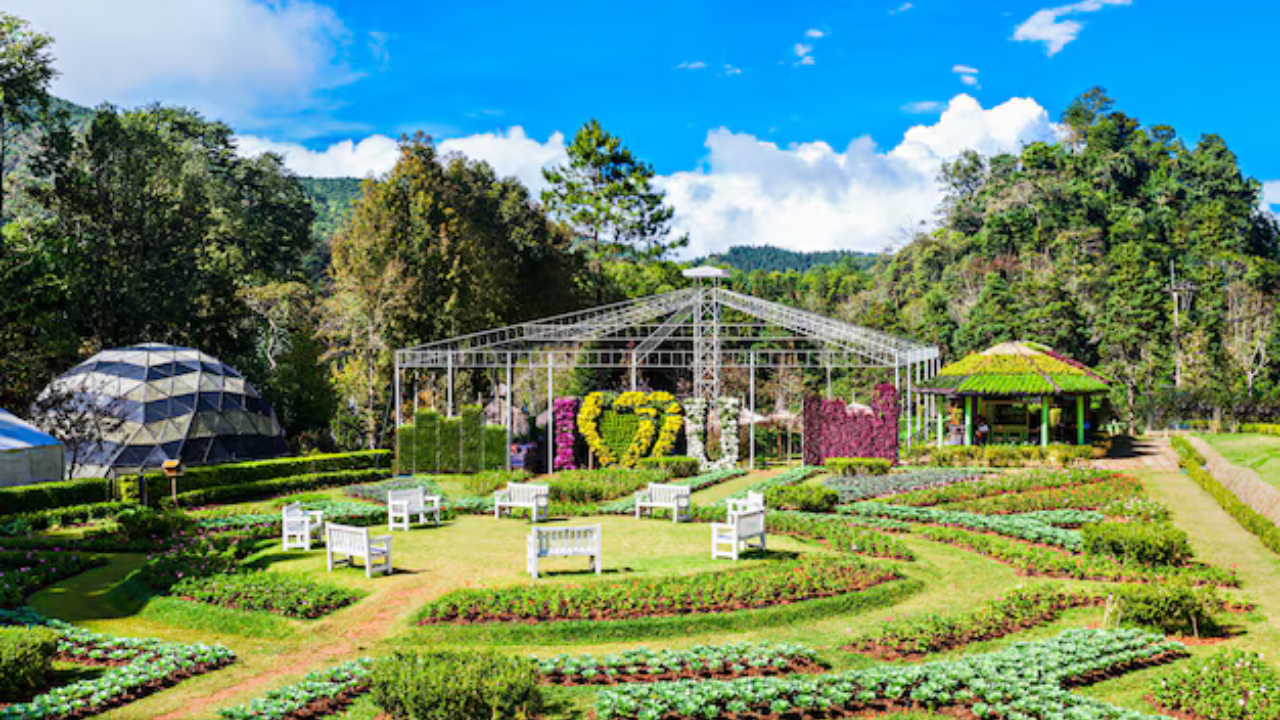Introduction
Mamgatoto is a term that has captured attention worldwide, resonating with enthusiasts of various interests. It spans a broad spectrum of topics, encompassing a renowned manga website, an emerging travel destination, and even a cultural practice rooted in history and tradition. As this multifaceted term gains recognition, understanding its origins, cultural implications, and modern significance becomes essential.
This article delves into the diverse meanings and contexts of Mamgatoto, exploring its evolution from a niche reference to a term of global significance. From manga enthusiasts to cultural explorers, Mamgatoto holds something special for everyone.
What Is Mamgatoto?
At its core, Mamgatoto is a versatile term with multiple interpretations. While its popularity stems from its association with a manga platform, it has also become synonymous with an idyllic travel destination and a rich cultural practice. This duality is what makes Mamgatoto a unique concept—bridging modern entertainment, tourism, and tradition.
Let’s break down the three key contexts where Mamgatoto is prominently featured:
1. Mamgatoto as a Manga Website
For manga enthusiasts, Mamgatoto represents a thriving online hub for discovering and enjoying a vast array of manga titles. This website stands out for several reasons:
- Extensive Collection: Mamgatoto boasts a library of manga titles that cater to diverse genres and languages, ensuring there’s something for every reader.
- User-Friendly Interface: The platform is designed to offer seamless navigation, making it accessible to users of all tech levels.
- Community Interaction: Beyond just reading manga, Mamgatoto fosters a sense of community. Users can share reviews, discuss their favorite titles, and connect with like-minded fans worldwide.
The website’s commitment to quality content and user engagement has solidified its reputation as a go-to platform for manga aficionados.
2. Mamgatoto as a Travel Destination
Beyond the digital realm, Mamgatoto is emerging as a captivating travel destination. Nestled in breathtaking landscapes, this destination offers a blend of adventure, culture, and tranquility that appeals to wanderlust-filled souls.
- Natural Beauty: Mamgatoto is renowned for its lush greenery, serene landscapes, and hidden trails that invite exploration.
- Cultural Richness: Visitors can immerse themselves in local traditions, participate in festivals, and discover historical landmarks that tell the story of Mamgatoto’s heritage.
- Unique Experiences: From adventure sports to spiritual retreats, Mamgatoto caters to travelers seeking both excitement and relaxation.
Whether you’re looking for a peaceful getaway or an enriching cultural journey, Mamgatoto promises an unforgettable experience.
3. Mamgatoto as a Cultural Practice
On a deeper level, Mamgatoto embodies a cultural and spiritual practice that has been preserved and passed down through generations. Rooted in ancient traditions, it holds immense significance for communities worldwide.
The Origins of Mamgatoto
The origins of Mamgatoto are shrouded in mystery, tracing back to early human societies. It is believed to have been a practice of connecting with the natural world, fostering community ties, and celebrating cultural heritage. Over centuries, Mamgatoto has evolved, adapting to diverse cultural contexts while retaining its essence.
The Significance of Mamgatoto
Mamgatoto is more than just rituals and ceremonies—it is a way of life. It connects individuals to their roots, serving as a bridge between the past and the present. Key aspects of Mamgatoto include:
- Rituals and Ceremonies: These traditions reflect the values and beliefs of the community, fostering unity and spiritual growth.
- Preservation of Heritage: Mamgatoto plays a vital role in preserving the cultural identity of communities, ensuring their stories and practices endure.
- Community Bonding: The practice strengthens social bonds, encouraging collective participation and shared experiences.
Through Mamgatoto, individuals can rediscover their cultural heritage, gaining a deeper appreciation for their history and traditions.
Why Is Mamgatoto Gaining Popularity?
The rising popularity of Mamgatoto can be attributed to its versatility and universal appeal. Whether as a manga platform, a travel destination, or a cultural practice, Mamgatoto resonates with diverse audiences for several reasons:
- Accessibility: The manga website makes Japanese storytelling accessible to global audiences, breaking down language barriers.
- Unique Experiences: As a travel destination, Mamgatoto offers something distinct from mainstream tourist spots.
- Cultural Revival: The emphasis on tradition and heritage in Mamgatoto’s cultural practices appeals to those seeking deeper connections to their roots.
Historical Significance of Mamgatoto
The historical significance of Mamgatoto is deeply intertwined with the development of early societies. Derived from the ancient language of indigenous peoples, the term combines “Mamga,” meaning “earth,” with “toto,” signifying “sacred” or “holy.” Together, Mamgatoto translates to “sacred earth” or “holy ground,” a reflection of its central role in spiritual and societal traditions.
Mamgatoto in Early Civilizations
Mamgatoto’s origins can be traced back to ancient agricultural communities. Archaeological findings reveal that early societies used Mamgatoto sites for sacred rituals marking key events, such as planting and harvesting seasons. These ceremonies were essential in fostering social cohesion, honoring the cycles of nature, and invoking blessings for bountiful harvests.
The rituals performed at Mamgatoto sites often included songs, dances, and offerings, underscoring the community’s gratitude and dependence on the earth’s resources. These practices not only strengthened communal bonds but also laid the foundation for a shared cultural identity.
Preservation of Historical Practices
Despite the passage of time, many Mamgatoto traditions remain alive today. Across different cultures, variations of these practices are still observed, reflecting a universal respect for nature and its cycles. Historical records highlight how Mamgatoto rituals evolved, incorporating influences from neighboring cultures while retaining their core principles of reverence for the earth.
Cultural Impact of Mamgatoto
Mamgatoto’s influence on culture spans generations and geographies, making it a cornerstone of heritage for many communities.
Festivals and Celebrations
Mamgatoto festivals have long been an integral part of cultural life, symbolizing unity, gratitude, and spiritual connection. These celebrations often coincide with significant agricultural milestones, such as planting or harvesting. The festivities include vibrant music, dance, and traditional attire, showcasing the community’s creativity and devotion.
For example, in certain regions, Mamgatoto festivals are marked by the creation of elaborate earth mandalas, symbolizing harmony and abundance. Such traditions not only preserve cultural heritage but also educate younger generations about the importance of sustainability and respect for nature.
Influence on Art and Literature
Mamgatoto’s rich history and symbolism have inspired countless works of art, literature, and music. From ancient carvings on sacred stones to modern poetry celebrating the bond between humanity and the earth, Mamgatoto continues to be a source of creative inspiration.
Modern artists often blend traditional Mamgatoto motifs with contemporary styles, creating works that resonate with both historical and current audiences. Similarly, writers have used Mamgatoto themes to explore ideas of resilience, harmony, and interconnectedness in an ever-changing world.
Mamgatoto in the Modern Context
While Mamgatoto is deeply rooted in tradition, its principles are more relevant than ever in addressing today’s global challenges.
Environmental Sustainability
In an era of ecological crises, Mamgatoto offers timeless wisdom on living in harmony with nature. Indigenous knowledge systems, which include Mamgatoto practices, emphasize sustainable resource management, biodiversity conservation, and respect for natural ecosystems.
Integrating Mamgatoto principles into modern environmental policies can lead to more effective solutions. For example, community-driven reforestation projects inspired by Mamgatoto rituals have successfully restored degraded landscapes while fostering social unity.
Symbol of Unity and Diversity
In our interconnected world, Mamgatoto has transcended its traditional boundaries to become a symbol of unity and inclusivity. As cultures merge and evolve, Mamgatoto represents the shared values that enrich diverse communities.
Contemporary celebrations of Mamgatoto often blend traditional elements with modern innovations, such as eco-friendly practices and digital storytelling. These adaptations highlight the enduring relevance of Mamgatoto in fostering a sense of belonging and mutual respect.
Role in Holistic Wellness
Mamgatoto’s emphasis on balance, harmony, and connection to nature aligns seamlessly with modern approaches to health and wellness. Practices inspired by Mamgatoto, such as grounding exercises and nature-based meditation, have gained popularity for promoting physical, mental, and emotional well-being.
Wellness retreats centered around Mamgatoto principles offer participants an opportunity to reconnect with nature, reduce stress, and cultivate mindfulness. This holistic approach to health underscores the universal appeal of Mamgatoto’s teachings.
The Future of Mamgatoto
As the world faces complex challenges, Mamgatoto’s timeless wisdom provides a beacon of hope and possibility. Its principles of sustainability, unity, and spiritual connection offer valuable lessons for navigating uncertainty and building a better future.
Communities worldwide are increasingly recognizing the importance of preserving Mamgatoto traditions while adapting them to modern contexts. By integrating Mamgatoto into education, policymaking, and cultural exchange, we can ensure its enduring legacy.
Legal and Ethical Considerations in Healthcare for Pregnant Women and Children
When delivering healthcare to pregnant women and their children, healthcare providers must carefully navigate a landscape rich in legal and ethical responsibilities. By understanding and adhering to these considerations, professionals ensure the rights, well-being, and privacy of their patients while fostering trust and professionalism.
Legal Considerations in Maternal and Child Healthcare
Informed Consent
One of the foundational legal principles in healthcare is informed consent. This requires healthcare providers to thoroughly inform the mother or legal guardian about the potential risks, benefits, and alternatives to any proposed medical treatment for the child or the mother. Informed consent should be obtained in a manner that ensures understanding, voluntariness, and freedom from coercion.
For example, if a pregnant woman requires a specific diagnostic test, the healthcare provider must explain the procedure, its necessity, and any potential risks. Only after the mother or guardian comprehends and agrees to proceed can the provider legally administer the care. This protects patient autonomy and ensures ethical practices.
Confidentiality and Privacy
Healthcare providers are bound by laws, such as the Health Insurance Portability and Accountability Act (HIPAA) in the United States, to protect the confidentiality of their patients. Maintaining the privacy of both pregnant women and their children is critical. Medical information must not be disclosed without explicit patient consent, except in limited scenarios mandated by law, such as safeguarding public health or responding to legal subpoenas.
For instance, if a pregnant teenager seeks prenatal care, the healthcare provider must ensure that her medical information is not shared without her explicit consent, safeguarding her privacy and encouraging trust in the healthcare system.
Ethical Considerations in Maternal and Child Healthcare
Principle of Beneficence
The ethical principle of beneficence emphasizes acting in the best interests of the patient. Healthcare providers must prioritize the well-being of both the mother and the unborn child, balancing their actions to avoid harm while promoting health and safety. This often involves making evidence-based decisions and tailoring care to individual patient needs.
Respecting Patient Autonomy
Respecting patient autonomy is another cornerstone of ethical healthcare. Healthcare providers must honor the decisions of patients regarding their care, even in cases where these choices differ from the provider’s recommendations. For example, if a pregnant woman declines a recommended procedure after understanding its implications, her decision must be respected.
Justice in Care
Justice in healthcare emphasizes fairness in the distribution of resources and treatments. Healthcare providers must ensure that all patients, regardless of socioeconomic background, receive equitable care.
Cultural Sensitivity and Ethical Care
Providing culturally sensitive care is essential, particularly for diverse populations. For example, understanding and respecting cultural practices surrounding childbirth can significantly impact a patient’s comfort and satisfaction with care.
Economic Implications of Mamgatoto
The term “Mamgatoto” holds profound significance, extending beyond a cultural or agricultural context to economic dimensions. Its cultivation, processing, and distribution play a pivotal role in stimulating local and global economies.
Job Creation and Economic Growth
The production and distribution of Mamgatoto generate numerous job opportunities, especially in regions where it is a primary industry. From farmers and processors to logistics and retail workers, Mamgatoto creates a broad spectrum of employment opportunities that uplift communities.
Tourism and Cultural Festivals
Mamgatoto also boosts tourism, drawing visitors to regions where it is produced or celebrated. Cultural events centered around Mamgatoto, such as festivals, exhibitions, or themed markets, attract both local and international visitors, significantly benefiting local businesses such as hotels, restaurants, and craft vendors.
For instance, festivals highlighting Mamgatoto-themed traditions often showcase its cultural heritage, fostering global interest and boosting local economies.
Innovation and Industry Growth
Mamgatoto drives innovation, encouraging the development of new industries and sustainable practices. Advances in cultivation techniques, such as organic farming methods, enhance its environmental benefits. Additionally, industries are exploring ways to integrate Mamgatoto into diverse sectors, including cosmetics, wellness products, and even technological applications.
Community Development
Mamgatoto’s economic contributions extend to community growth. Collaborations between stakeholders, such as policymakers, non-profits, and businesses, foster initiatives that address broader socioeconomic challenges. This creates an ecosystem where Mamgatoto serves as a tool for empowerment and resilience.
Social Dynamics of Mamgatoto
Mamgatoto transcends economic and agricultural contexts, significantly influencing social dynamics and cultural representation.
Fostering Community Interactions
Mamgatoto promotes inclusivity and collaboration by bringing people together through shared traditions, festivals, and communal activities. Its cultural significance fosters a sense of belonging and community pride, enhancing social cohesion.
For example, communal efforts in Mamgatoto farming and celebrations often involve diverse groups, allowing for the exchange of ideas and fostering unity.
Representation in Media and Popular Culture
Mamgatoto has inspired creative expression, finding representation in manga, anime, and other media. These portrayals not only entertain but also highlight the cultural and historical significance of Mamgatoto. Globally, Mamgatoto-themed stories captivate audiences by exploring themes of resilience, tradition, and innovation.
Sustainability and Environmental Awareness
Mamgatoto promotes a deep connection with nature, emphasizing sustainability. Communities engaged in its cultivation often advocate for environmental stewardship, ensuring that its production does not harm ecosystems.
The Cultural Roots of Mamgatoto
Historical Origins
Mamgatoto originated in indigenous communities, where it played a pivotal role in oral traditions and cultural practices. The term symbolizes unity and tradition, often used to convey ideas of belonging and shared identity. It was passed down through generations, serving as a bridge between the past and the present.
Cultural Significance
Mamgatoto represents more than words—it embodies values such as heritage, identity, and continuity. For many communities, it serves as a reminder of their roots and a celebration of diversity. Its use in storytelling, rituals, and ceremonies highlights its integral role in preserving cultural heritage.
Modern Contexts
In today’s world, Mamgatoto has transcended its traditional boundaries. It is now used in various contexts, from academic discussions to creative endeavors, symbolizing themes of unity and shared cultural identity.
Technological Integration of Mamgatoto
In recent years, Mamgatoto has witnessed significant technological advancements, marking a new chapter in its evolution. These developments have redefined how it is perceived and utilized, particularly in areas such as gaming, education, and online communities.
Innovations Shaping Mamgatoto
- Artificial Intelligence (AI)
AI-driven platforms have revolutionized how Mamgatoto is integrated into interactive experiences. From personalized learning applications to virtual assistants, AI enhances accessibility and engagement. - Augmented Reality (AR)
AR brings Mamgatoto to life in immersive environments. Interactive toys and smart play settings allow children to explore cultural narratives while developing cognitive and motor skills. - Virtual Reality (VR)
VR offers an engaging medium for storytelling and education. By immersing users in the world of Mamgatoto, VR fosters a deeper connection with its cultural roots.
Educational Applications
Mamgatoto’s integration into early childhood education has been particularly impactful. Personalized learning platforms leverage AI to create tailored experiences, helping children develop essential skills while fostering an appreciation for cultural heritage.
Challenges in Technological Integration
While technological advancements offer numerous benefits, they also pose challenges. Some critics argue that the digitalization of Mamgatoto risks overshadowing its traditional elements. Addressing these concerns requires a balanced approach that respects cultural authenticity while embracing innovation.
Key Challenges
- Cultural Preservation
Safeguarding the cultural heritage of Mamgatoto is paramount. Efforts must focus on maintaining its authenticity and avoiding commercial exploitation. - Equitable Access
Ensuring that technology-driven experiences are accessible to all is critical. This includes addressing socioeconomic disparities and promoting inclusivity. - Privacy and Safety
Protecting children’s privacy and online safety is a significant concern in the digital age. Stakeholders must implement robust measures to create secure environments.
Mamgatoto in the Digital Era
The digital resurgence of Mamgatoto has cemented its place in global gaming culture and online communities. Platforms and games featuring Mamgatoto have gained popularity, showcasing its adaptability and appeal to diverse audiences.
Collaborative Efforts
Mamgatoto has fostered partnerships among parents, educators, policymakers, and technology companies. These collaborations aim to address multifaceted challenges, from online safety to preserving cultural narratives.
Global Reach
The integration of Mamgatoto into digital platforms has expanded its reach, introducing it to audiences worldwide. This global exposure underscores its universal relevance and timeless appeal.
Future Prospects for Mamgatoto
As Mamgatoto continues to evolve, its future lies in finding harmony between tradition and innovation. By promoting ethical practices, inclusive policies, and sustainable development, stakeholders can ensure its lasting impact.
Innovative Possibilities
- Cultural Archives
Digital repositories can preserve the stories and traditions associated with Mamgatoto, making them accessible to future generations. - Interactive Storytelling
Advances in AI and AR can create dynamic storytelling experiences, allowing users to engage with Mamgatoto’s rich narratives in novel ways. - Community Engagement
Online communities centered around Mamgatoto can foster dialogue and collaboration, furthering its cultural and educational significance.
FAQs About Mamgatoto
Q: What does Mamgatoto mean?
A: Mamgatoto symbolizes unity and tradition, with roots in ancient folklore and cultural practices.
Q: Where did Mamgatoto originate?
A: Mamgatoto originated in indigenous communities, primarily through oral traditions and storytelling.
Q: How is Mamgatoto used today?
A: Today, Mamgatoto is used in various contexts, including education, gaming, and cultural discussions, to convey themes of unity and heritage.
Q: Why is Mamgatoto significant in culture?
A: Mamgatoto represents heritage, identity, and continuity, serving as a vital link between past and present.
Q: What challenges does Mamgatoto face?
A: Challenges include preserving its authenticity, ensuring equitable access to technology, and addressing privacy concerns in the digital age.
Conclusion
Mamgatoto is a term steeped in history and cultural significance, bridging the gap between tradition and modernity. Its integration into technology and global culture highlights its adaptability and enduring relevance. By embracing both innovation and authenticity, Mamgatoto can continue to inspire and unite generations.
Understanding and appreciating Mamgatoto allows us to connect with our heritage and celebrate the diversity of human culture. As we navigate the challenges and opportunities of the digital era, Mamgatoto serves as a powerful reminder of the importance of unity and tradition in an ever-changing world.
Stay in touch for more updates and alerts visit: The Touch Cric!




